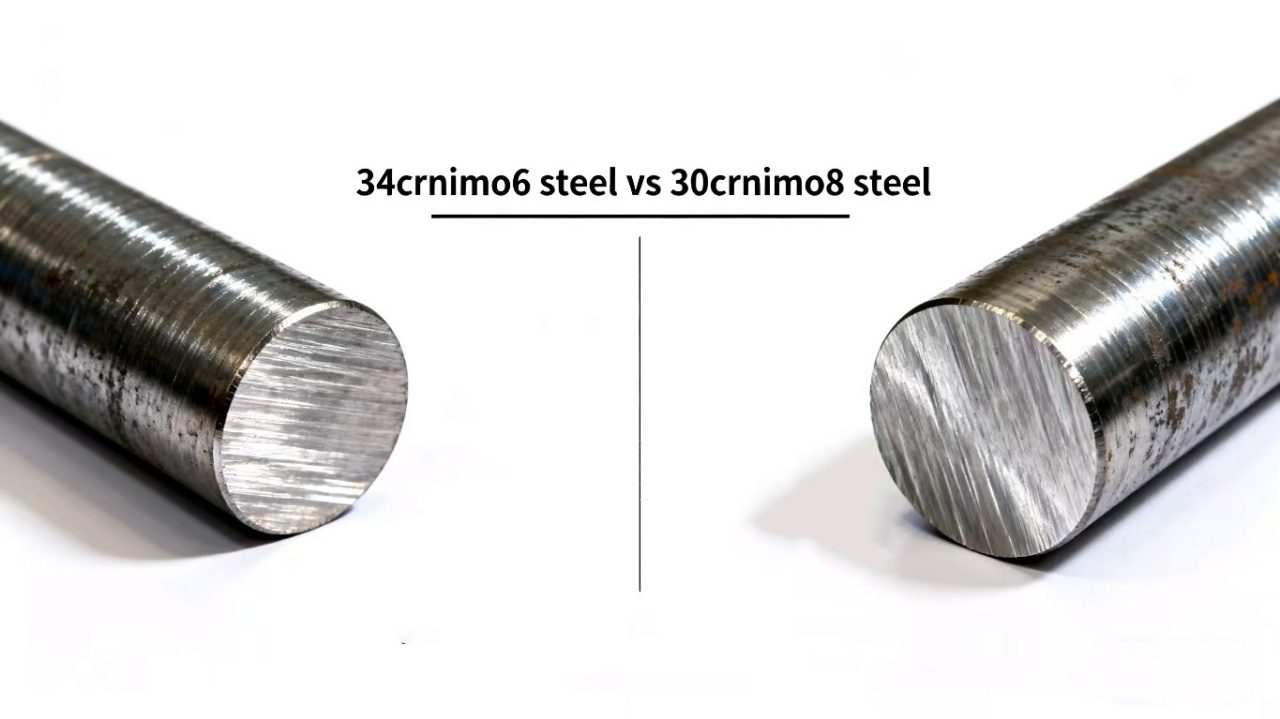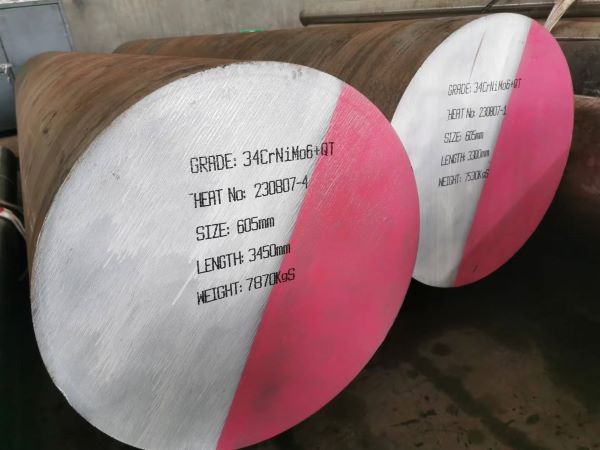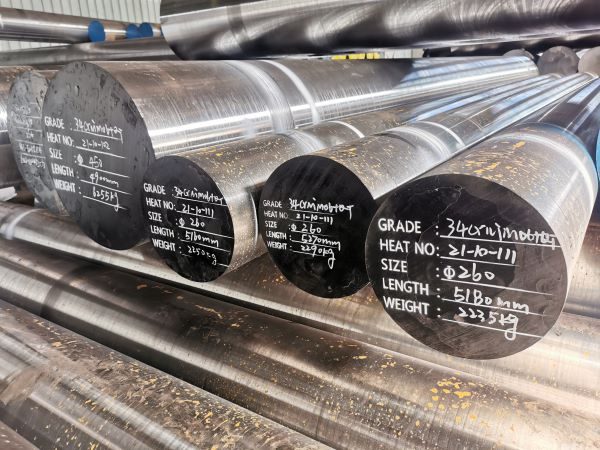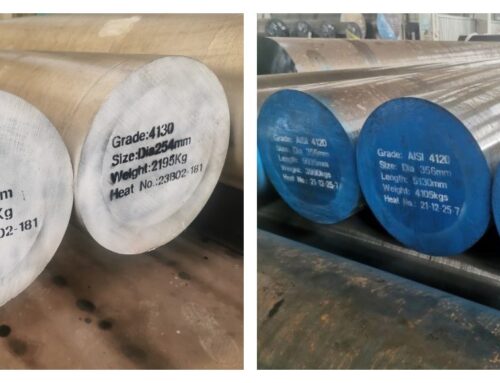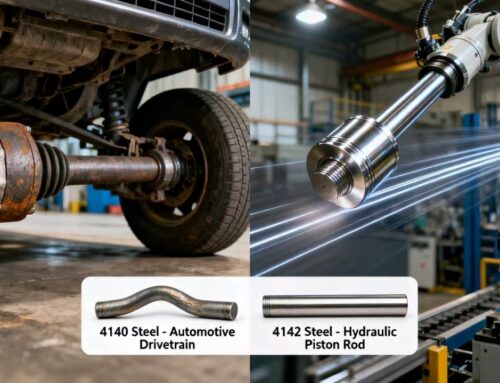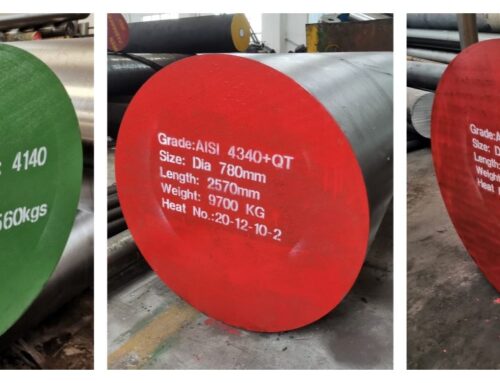In applications such as heavy-duty machinery, wind turbine main shafts, and high-end automotive transmission systems, where stringent requirements for material strength, toughness, and fatigue life are crucial, 34CrNiMo6 and 30CrNiMo8 remain key candidates for engineers.
While both are chromium-nickel-molybdenum structural alloy steels, subtle differences in the alloying element ratios lead to significant differences in mechanical properties, process adaptability, and application scenarios.
When faced with gears that must withstand long-term impact loads or shaft components subject to alternating stresses, the choice between the “balanced stability” of the former and the “upgraded toughness” of the latter often directly determines the safety margins and service life of the equipment. This article will examine the performance differences between the two materials from a chemical perspective, providing a clear reference for selecting key components.
Core Differences at a Glance
| Properties | 34CrNiMo6 (1.6582) | 30CrNiMo8 (1.6580) | Comparison |
| Main Standard | European Standard EN 10083-3 | European Standard EN 10083-3 | Different Grades Under the Same Standard |
| Carbon Content (C) | 0.34% | 0.30% | 34CrNiMo6 has slightly higher carbon content and a slightly higher theoretical peak hardness. |
| Nickel Content (Ni) | 1.50% | 2.0% | Core Difference: 30CrNiMo8 has a higher nickel content. |
| Hardenability | High | Very High | 30CrNiMo8 has superior hardenability due to its higher Ni content. |
| Core Applications | Large, heavy-duty gears, shafts, rotors, connecting rods | Extra-large gears, shafts, rotors, aircraft landing gear | 30CrNiMo8 is used for larger components with more extreme core performance requirements. |
Detailed Comparative Analysis
1. Chemical Composition (%)
| Grade | C | Si | Mn | P | S | Cr | Ni | Mo |
| 34CrNiMo6/1.6582 | 0.30-0.38 | ≤ 0.4 | 0.50-0.80 | ≤ 0.025 | ≤ 0.035 | 1.3-1.7 | 1.3-1.7 | 0.15-0.30 |
| 30CrNiMo8/1.6580 | 0.26-0.34 | ≤ 0.4 | 0.50-0.80 | ≤ 0.025 | ≤ 0.035 | 1.8-2.2 | 1.8-2.2 | 0.3-0.5 |
- Carbon (C): 34CrNiMo6 has a higher carbon content range, meaning that under the same heat treatment conditions, its theoretically achievable upper surface hardness and strength are slightly higher than those of 30CrNiMo8. However, the actual difference is minimal.
- Nickel (Ni) and Chromium (Cr): This is the most critical difference. 30CrNiMo8 has significantly higher nickel and chromium content.
-Nickel (Ni): Significantly improves the steel’s hardenability (enabling hardening even in the core of large cross-section parts) and significantly improves toughness and low-temperature toughness.
-Chromium (Cr): Improves hardenability, strength, wear resistance, and (minor) corrosion resistance. - Molybdenum (Mo): 30CrNiMo8 also has a higher molybdenum content, which further enhances its hardenability and significantly reduces the tendency to temper embrittlement during high-temperature tempering.
Conclusion: The 30CrNiMo8 alloy is designed to achieve superior hardenability and overall mechanical properties compared to 34CrNiMo6, particularly in the core of ultra-large cross-section parts.
2. Mechanical Properties (After Heat Treatment)
Both 30CrNiMo8 and 34CrNiMo6 achieve very similar strength levels (e.g., Rm ≥ 1000 MPa or ≥ 1200 MPa) after quenching and tempering (quenching + high-temperature tempering). However, due to the higher hardenability of 30CrNiMo8:
- For large parts:30CrNiMo8 achieves a higher strength and better toughness combination than 34CrNiMo6 in the core. 34CrNiMo6 may experience reduced hardness and strength in the core of large parts.
- For small parts:the performance difference between the two is virtually the same.
3. Hardenability
Hardenability is the core difference between the two. Due to its higher Ni, Cr, and Mo content, 30CrNiMo8 has significantly higher hardenability than 34CrNiMo6. This means:
- Under the same cooling capacity, 30CrNiMo8 can be hardened to a larger critical diameter.
- For workpieces of the same size, 30CrNiMo8 can more easily develop a martensite/bainite structure in the core, resulting in better core properties after tempering.
4. Main Applications
34CrNiMo6: Widely used in the manufacture of large, heavy-loaded, and highly stressed critical components, such as:
- Heavy-duty vehicle transmission gears and shafts
- Engine crankshafts and connecting rods
- Turbine rotors
- High-strength bolts
30CrNiMo8: Used in applications with higher requirements, particularly those with large cross-sectional dimensions and extreme operating conditions requiring highly consistent core and surface properties, such as:
- Large gears and shafts for million-kilowatt generators
- Propeller shafts and gears for large ships
- Main shafts for heavy-duty presses
- Aircraft landing gear (requires extremely high strength and toughness)
- Large molds
Summary and Selection Guide
1. When 30CrNiMo8 is Preferred:
- The workpiece cross-section is very large (e.g., diameter > 200mm).
- The design requires extremely high strength and toughness in the core of the part, with no performance degradation.
- The part operates in a low-temperature environment or has extremely stringent impact toughness requirements.
- The budget allows (30CrNiMo8 is generally more expensive due to its high Ni content).
2. When 34CrNiMo6 is Preferred:
- The workpiece cross-section is medium or large, but not extreme.
- The performance of 34CrNiMo6 fully meets the design specifications.
- Considering cost, 34CrNiMo6 is the more economical choice.
3. Substitutability:
In most non-extreme designs, these two materials can be substituted for each other.However, if a substitution is made, the heat treatment process (especially the quench cooling rate and tempering temperature) must be redesigned and verified because their hardenability differs, and using the old process may result in substandard performance or cracking.
Generally, replacing 34CrNiMo6 with 30CrNiMo8 is a safer option (due to its higher performance ceiling). However, carefully evaluating the core’s performance is crucial.
Simply put, 30CrNiMo8 can be considered a “higher-performance upgrade” of 34CrNiMo6, specifically designed to handle more demanding operating conditions and larger components.
